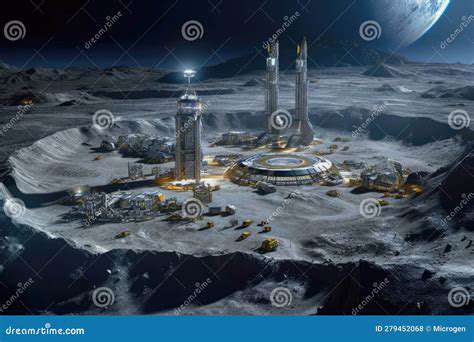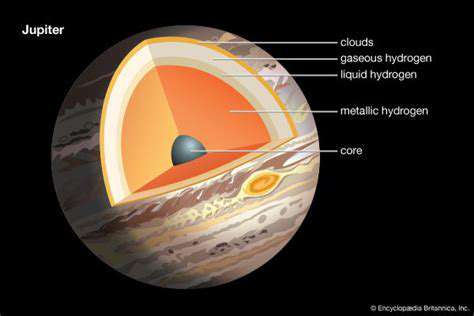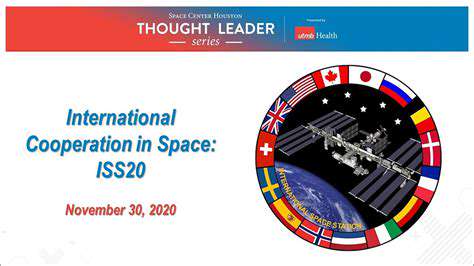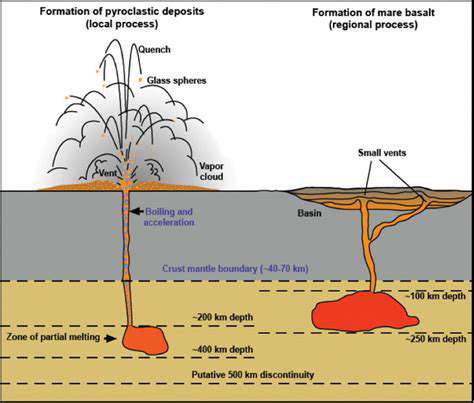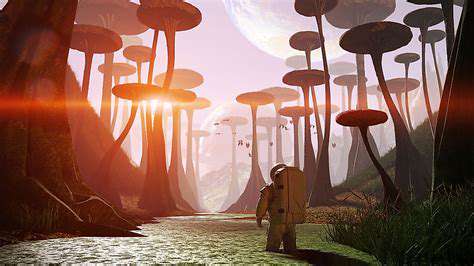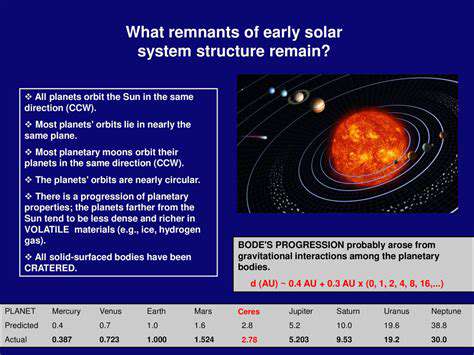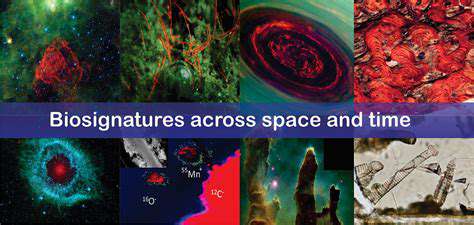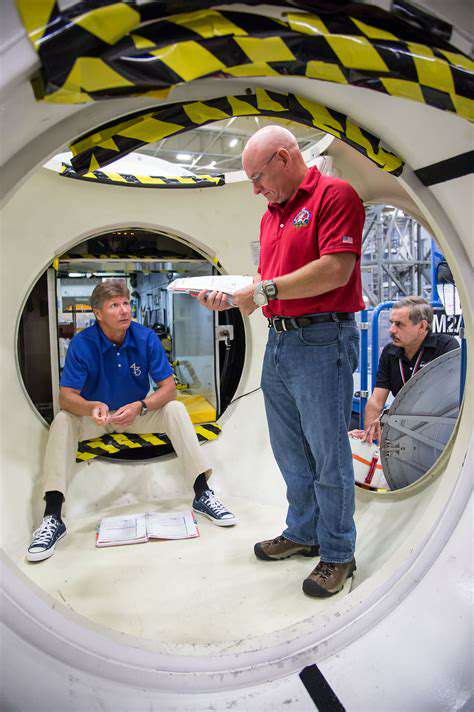Unveiling the Universe's Deepest Secrets
The James Webb Space Telescope represents humanity's relentless pursuit of cosmic knowledge, pushing the boundaries of what we can observe to unimaginable distances. Unlike anything before it, this observatory grants us a unique window into the past, capturing light from the earliest galaxies that flickered to life after the Big Bang. Its ability to analyze exoplanet atmospheres could fundamentally alter our understanding of life's potential in the universe. This technological marvel isn't just another telescope - it's rewriting astronomy textbooks as we speak.
What sets JWST apart is its remarkable sensitivity to incredibly faint light signatures. While Hubble gave us stunning visible-light images, Webb's instruments detect the whisper-thin infrared signatures of objects so distant their light has traveled for over 13 billion years. This capability provides an unprecedented view of cosmic evolution, showing us the universe in its infancy.
Infrared Vision: Seeing Beyond the Visible
Traditional telescopes like Hubble show us the universe in visible light, but JWST operates in a completely different realm. By focusing on infrared wavelengths, it can peer through the cosmic dust clouds that typically obscure our view. This infrared vision reveals stellar nurseries and galactic cores that have remained hidden until now. The implications for star formation studies are staggering - we're seeing the birth of stars and planets in environments we couldn't previously observe.
The science behind this is fascinating. Infrared light, with its longer wavelengths, can pass through dust clouds that block visible light. This allows JWST to observe regions like the center of our Milky Way or distant star-forming regions with remarkable clarity. Essentially, we've removed the cosmic blindfold that's limited our observations for decades.
A Gold-Plated Mirror: Capturing Fainter Light
JWST's primary mirror is a masterpiece of engineering - eighteen precisely aligned hexagonal segments coated with a thin layer of gold. This isn't just for aesthetics; gold reflects infrared light more effectively than other materials. The mirror's 6.5-meter diameter collects six times more light than Hubble's, allowing observations of objects 100 times fainter. This light-gathering power is crucial for studying the universe's first light sources.
What's particularly ingenious is how these mirror segments work together. Each segment can be adjusted with nanometer precision to create a perfect focusing surface. This attention to detail means JWST can resolve details smaller than a penny viewed from 40 kilometers away - an astonishing feat of engineering.
Orbiting Beyond Earth's Atmosphere: Minimizing Interference
Positioned at Lagrange Point 2, about 1.5 million kilometers from Earth, JWST operates in an environment free from atmospheric distortion. This strategic location offers several advantages: stable temperatures, minimal light interference, and continuous viewing opportunities. Unlike Hubble, which orbits Earth every 90 minutes, JWST maintains a constant position relative to Earth and Sun, allowing uninterrupted observations of deep space targets.
Exoplanet Atmospheres: Searching for Habitable Worlds
One of JWST's most exciting capabilities is analyzing the chemical makeup of distant planets' atmospheres. When an exoplanet transits its star, JWST can detect minute changes in starlight passing through the planet's atmosphere. This technique has already identified water vapor, carbon dioxide, and even potential biosignatures on several exoplanets. Each new observation brings us closer to answering humanity's oldest question: are we alone in the universe?
A Legacy of Discovery: Building on Hubble's Legacy
Rather than replacing Hubble, JWST complements its predecessor's work. Hubble's visible-light images provide context for JWST's infrared observations, creating a more complete picture of cosmic phenomena. Together, they form an unbeatable team - Hubble shows us what's there, while JWST reveals what's hidden beneath the surface. This synergy will undoubtedly lead to discoveries we can't yet imagine.
Observing the First Stars and Galaxies: Unveiling the Early Universe
JWST's observations of the early universe are perhaps its most profound contribution. By detecting light from the first galaxies, we're essentially looking back to a time when the universe was just a few hundred million years old. These observations challenge existing theories about galaxy formation and dark matter distribution. Every image from JWST's deep field observations contains thousands of galaxies, each telling a story about the universe's infancy.
Peering into the Birthplaces of Stars and Galaxies
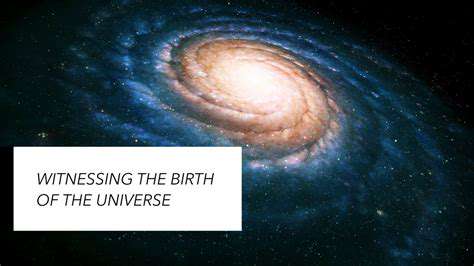
Unveiling the Mysteries of Stellar Nurseries
Stellar nurseries represent nature's most spectacular construction sites, where molecular clouds spanning light-years collapse under their own gravity to form new stars. These cosmic cradles exhibit complex dynamics - turbulent gas flows, magnetic fields, and shock waves all play roles in determining which gas clumps will become stars. Recent JWST observations have revealed unexpected structures in these nurseries, forcing astronomers to rethink star formation models.
The Role of Gravity in Star Formation
Gravity's role in star formation is more nuanced than simple collapse. As gas clouds condense, they fragment into smaller clumps through a process called hierarchical fragmentation. This creates the initial mass function - the distribution of star sizes we observe. JWST's detailed observations show this process occurring in real time, with some protostars accreting material while others are ejected from their birth clouds.
The Influence of Dust and Gas
The composition of stellar nurseries varies dramatically across the universe. Some contain primarily hydrogen and helium, while others are enriched with heavier elements from previous generations of stars. JWST's spectroscopic capabilities allow us to measure these variations with unprecedented precision, revealing how a nebula's chemistry affects the planets that might form there. This has profound implications for understanding planetary system diversity.
Observational Techniques for Studying Stellar Nurseries
Modern astronomy employs multiple techniques to study star formation. JWST combines near- and mid-infrared imaging with spectroscopy to analyze both the structure and chemistry of stellar nurseries. Radio telescopes complement these observations by mapping cold molecular gas, while adaptive optics on ground-based telescopes provide high-resolution views of forming stars. This multi-wavelength approach is revolutionizing our understanding of stellar birth.
The Significance of Protostars
Protostars represent a crucial phase where theoretical models meet observational reality. JWST has observed protostars at various evolutionary stages, from dense cores barely beginning to collapse to objects nearing hydrogen fusion ignition. These observations validate some theoretical predictions while challenging others, particularly regarding the timescales of protostellar evolution and the formation of planetary systems.
The Variety of Stellar Nurseries
The diversity of star-forming regions is astounding. From the massive, chaotic nurseries in galaxy mergers to the more sedate molecular clouds in spiral arms, each environment produces stars with different characteristics. JWST has even detected star formation in unexpected locations, such as the halos of galaxies and tidal tails from galactic collisions. This diversity suggests our Milky Way's star formation may not be representative of the universe as a whole.
The Future of Research into Stellar Nurseries
Future stellar nursery research will focus on connecting small-scale processes to galactic evolution. New instruments will measure magnetic field strengths in collapsing clouds, while advanced simulations will model turbulent gas dynamics. JWST's ongoing observations will likely reveal even more surprises about how stars form, continuing to reshape our cosmic understanding. As technology improves, we may eventually observe planet formation in real time within these nurseries.
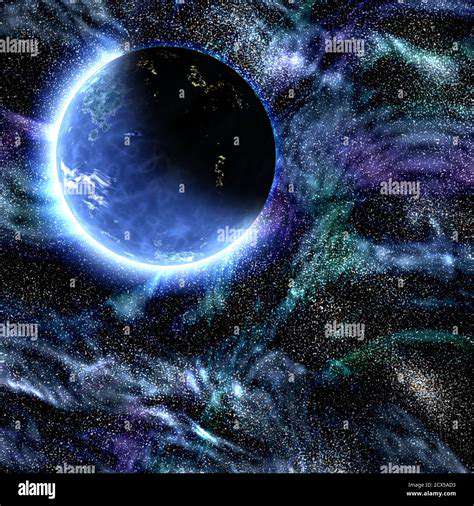
The Future of Cosmic Exploration
Unveiling the Cosmos's Deepest Secrets
JWST represents just the beginning of a new era in cosmic exploration. Its infrared capabilities allow us to study the epoch of reionization, when the first light sources transformed the early universe. These observations are revealing how early galaxies ionized the intergalactic medium, ending the cosmic dark ages. Each new dataset challenges our understanding of how structure formed in the young universe.
Pushing the Boundaries of Infrared Astronomy
The telescope's infrared instruments are breaking records daily. JWST has detected galaxies so distant their light has been traveling for over 13.4 billion years - just 300 million years after the Big Bang. These observations suggest early galaxies formed stars much faster than predicted, forcing revisions to galaxy formation models. Future instruments will build on JWST's foundation, pushing detection limits even further.
Exploring Exoplanet Atmospheres
Exoplanet studies with JWST are entering a golden age. The telescope has already identified atmospheric components on planets orbiting small, cool stars - prime targets in the search for habitable worlds. Unexpected chemical disequilibrium in some atmospheres hints at possible biological activity, though non-biological explanations must be ruled out. Future observations will target Earth-sized planets in habitable zones, potentially finding the first definitive signs of extraterrestrial life.
Revolutionizing Stellar Astrophysics
JWST's impact on stellar physics cannot be overstated. By observing stars across their entire lifecycles, from protostars to supernova remnants, it's revealing previously hidden aspects of stellar evolution. Particular surprises have come from observations of massive stars' final stages, showing complex mass-loss processes that affect galactic chemical enrichment. These findings are crucial for understanding how galaxies evolve over cosmic time.
Observing the Formation of Planetary Systems
Protoplanetary disk observations with JWST are showing planet formation in unprecedented detail. The telescope has detected water and organic molecules in disks around young stars, the building blocks of future planets. Some disks show unexpected gaps and spirals suggesting planet formation begins earlier than previously thought. These observations are helping us understand how common Earth-like planets might be in the universe.
The Future of Cosmic Exploration: Expanding Horizons
JWST's legacy will extend far beyond its operational lifetime. The telescope is generating data that will fuel research for decades, much like Hubble's observations continue to produce discoveries years later. Future missions will build on JWST's capabilities, perhaps incorporating even larger mirrors or specialized instruments for studying specific phenomena. One thing is certain: JWST has opened doors to cosmic understanding we're only beginning to walk through.
